The Ragged Mountain Natural Area near Charlottesville, Virginia, is a beautiful 980-acre forest of mature oak, hickory, poplar, pine, and maple trees with a lake that serves as part of the community water supply. Trails lead through majestic forest, along rugged terrain, and through areas rich with wildlife. This area offers a unique opportunity for wilderness hiking within minutes of Charlottesville.
Hiking/Backpacking
May 8, 2018 10:48 AM
Distance : 5.7 mi
Duration (Total) : 4h 51m 10s
Duration (Active) : 4h 51m 10s
Duration (Paused) : 0
Avg Speed : 1.2 mi/h
Total Ascent : 666 ft
Highest Point : 868 ft
Difficulty : Hard
Bring boots to help on the rough or steep parts of the trail. Visit at different times of the year to experience the seasonal changes in flora and fauna. No dogs are allowed on the site.
-Tracked by Riverinemn, on Ramblr
Trip Facts
Parking Location:Upper Parking area off Reservoir Road - pass by the Lower Parking lot, which is located just before the road veers right towards the dam
Parking Availability : 20 slots. Additional parking in the Lower Parking lot, with a connecting trail to the main trail.
Fee: None
Hours: 7 AM to Sunset
Verizon INTERNET Coverage: 3 bars
Month Recorded: May
Given the rough terrain and steep slopes, this hike is rated difficult. Nevertheless, a trip to Ragged Mountain can be richly rewarding. This area has one the most diverse set of natural habitats to be found in Central Virginia, including several natural communities that are rare in our area. If you have an interest in exploring nature, you are certain to find many plants and animals to delight you. The City of Charlottesville and its partners have also made it easy to discover and learn about these natural treasures through an interactive map of the preserve. This map outlines the natural communities that exist in the area and the wildlife characteristic of those communities. You can access this site (both at home and while on the trail) at this link:
https://centerforurbanhabitats.com/rmnawebmapintro/
WEB LINKS - INTERNET CONNECTION REQUIRED and DATA RATES APPLY
Press Highlighted Link - If link not active in your app, copy link to Web browser
**************************************
This hike is described in the 60 Hikes book - here is an Amazon link:
http://www.amazon.com/Hikes-Within-Miles-Williamsburg-Fredericksburg/dp/089732708X/ref=sr_1_1?ie=UTF8&qid=1428101620&sr=8-1&keywords=60HikesRichmond
To learn more about this site, click the link below:
http://www.charlottesville.org/departments-and-services/departments-h-z/parks-recreation/parks-trails/city-parks/ragged-mountain
Parking Location:Upper Parking area off Reservoir Road - pass by the Lower Parking lot, which is located just before the road veers right towards the dam
Parking Availability : 20 slots. Additional parking in the Lower Parking lot, with a connecting trail to the main trail.
Fee: None
Hours: 7 AM to Sunset
Verizon INTERNET Coverage: 3 bars
Month Recorded: May
Given the rough terrain and steep slopes, this hike is rated difficult. Nevertheless, a trip to Ragged Mountain can be richly rewarding. This area has one the most diverse set of natural habitats to be found in Central Virginia, including several natural communities that are rare in our area. If you have an interest in exploring nature, you are certain to find many plants and animals to delight you. The City of Charlottesville and its partners have also made it easy to discover and learn about these natural treasures through an interactive map of the preserve. This map outlines the natural communities that exist in the area and the wildlife characteristic of those communities. You can access this site (both at home and while on the trail) at this link:
https://centerforurbanhabitats.com/rmnawebmapintro/
WEB LINKS - INTERNET CONNECTION REQUIRED and DATA RATES APPLY
Press Highlighted Link - If link not active in your app, copy link to Web browser
**************************************
This hike is described in the 60 Hikes book - here is an Amazon link:
http://www.amazon.com/Hikes-Within-Miles-Williamsburg-Fredericksburg/dp/089732708X/ref=sr_1_1?ie=UTF8&qid=1428101620&sr=8-1&keywords=60HikesRichmond
To learn more about this site, click the link below:
http://www.charlottesville.org/departments-and-services/departments-h-z/parks-recreation/parks-trails/city-parks/ragged-mountain

Trailhead
The trail starts at the back of the Upper Parking lot.
Rue-anemone
Rue-anemone is abundant along the trail in spring.
Common Name: Rue-Anemone
Scientific Name: Thalictrum thalictroides
Blooming Time: Mar-May
Rue-anemone is one of many showy wildflowers that develop in deciduous woodlands during the spring. Both the flowers and foliage are quite attractive. Because the flowers move around easily in the wind, it is sometimes called 'Windflower.' Habitats include mesic to dry deciduous woodlands, wooded slopes, and thinly wooded bluffs. This native wildflower is usually found in above-average to high quality woodlands where the original ground flora is largely intact. The flowers offer only pollen as a reward to insect visitors. Typical floral visitors include various bees, Syrphid flies, and bee flies; the bees usually collect pollen, while the flies feed on pollen. Some of these insects explore the showy flowers for nectar in vain.
DO NOT PICK WILDFLOWERS OR ATTEMPT TO TRANSPLANT THEM. Most wildflowers will not survive replanting.
WEB LINKS - INTERNET CONNECTION REQUIRED and DATA RATES APPLY
Press Highlighted Link - If link not active in your app, copy link to Web browser
**************************************
To find out more about this plant, go here:
https://www.wildflower.org/plants/result.php?id_plant=THTH2
***************************************
COPYRIGHT NOTICES
Text - Encyclopedia of Life,Creative Commons Attribution Non Commercial 3.0 (CC BY-NC 3.0) © John Hilty • Source: Illinois Wildflowers
Photo - Encyclopedia of Life,Image of Thalictrum thalictroides © Matt Flower ,Creative Commons Attribution Non Commercial 3.0 (CC BY-NC 3.0) , Unmodified
Common Name: Rue-Anemone
Scientific Name: Thalictrum thalictroides
Blooming Time: Mar-May
Rue-anemone is one of many showy wildflowers that develop in deciduous woodlands during the spring. Both the flowers and foliage are quite attractive. Because the flowers move around easily in the wind, it is sometimes called 'Windflower.' Habitats include mesic to dry deciduous woodlands, wooded slopes, and thinly wooded bluffs. This native wildflower is usually found in above-average to high quality woodlands where the original ground flora is largely intact. The flowers offer only pollen as a reward to insect visitors. Typical floral visitors include various bees, Syrphid flies, and bee flies; the bees usually collect pollen, while the flies feed on pollen. Some of these insects explore the showy flowers for nectar in vain.
DO NOT PICK WILDFLOWERS OR ATTEMPT TO TRANSPLANT THEM. Most wildflowers will not survive replanting.
WEB LINKS - INTERNET CONNECTION REQUIRED and DATA RATES APPLY
Press Highlighted Link - If link not active in your app, copy link to Web browser
**************************************
To find out more about this plant, go here:
https://www.wildflower.org/plants/result.php?id_plant=THTH2
***************************************
COPYRIGHT NOTICES
Text - Encyclopedia of Life,Creative Commons Attribution Non Commercial 3.0 (CC BY-NC 3.0) © John Hilty • Source: Illinois Wildflowers
Photo - Encyclopedia of Life,Image of Thalictrum thalictroides © Matt Flower ,Creative Commons Attribution Non Commercial 3.0 (CC BY-NC 3.0) , Unmodified
Scarlet Tanager
Scarlet Tanagers can be heard (and sometimes seen) throughout the natural area.
Scarlet Tanager
A medium-sized (7 inches) songbird, the male Scarlet Tanager is most easily identified by its bright red body, black wings, and black tail. Female Scarlet Tanagers are green above and dull yellow below with dark wings. Males of this species may be separated from male Summer Tanagers (Piranga rubra) by that species’ red wings and tail and from male Northern Cardinals (Cardinalis cardinalis) by that species’ black face and conspicuous crest, while females may be separated from female Summer Tanagers by that species’ paler back and darker breast. Scarlet Tanagers breed in a number of mature forest types, preferring larger areas of unbroken forest to smaller, more fragmented habitats. Scarlet Tanagers primarily eat insects and spiders during the breeding season, but may eat fruits, berries, and earthworms at other times of the year or when insects are scarce. In appropriate habitat, Scarlet Tanagers may be seen foraging for insects on leaves and branches in the tree canopy, in undergrowth, or, more rarely, directly on the ground.
WEB LINKS - INTERNET CONNECTION REQUIRED and DATA RATES APPLY
Press Highlighted Link - If link not active in your app, copy link to Web browser
**************************************
To find out more about this bird, visit the Cornell birding site:
https://www.allaboutbirds.org/guide/Scarlet_Tanager/id
***************************************
COPYRIGHT NOTICES
Text - Encyclopedia of Life,Creative Commons Attribution Non Commercial Share Alike 3.0 (CC BY-NC-SA 3.0)
© Smithsonian Institution Supplier: DC Birds
Photo - Encyclopedia of Life,Image of Piranga olivacea
© Scott Buckel ,translation missing: en.license_cc_by_nc_4_0 ,Unmodified
Cornell Lab of Ornithology, All About Birds at http://www.allaboutbirds.org/
Scarlet Tanager
A medium-sized (7 inches) songbird, the male Scarlet Tanager is most easily identified by its bright red body, black wings, and black tail. Female Scarlet Tanagers are green above and dull yellow below with dark wings. Males of this species may be separated from male Summer Tanagers (Piranga rubra) by that species’ red wings and tail and from male Northern Cardinals (Cardinalis cardinalis) by that species’ black face and conspicuous crest, while females may be separated from female Summer Tanagers by that species’ paler back and darker breast. Scarlet Tanagers breed in a number of mature forest types, preferring larger areas of unbroken forest to smaller, more fragmented habitats. Scarlet Tanagers primarily eat insects and spiders during the breeding season, but may eat fruits, berries, and earthworms at other times of the year or when insects are scarce. In appropriate habitat, Scarlet Tanagers may be seen foraging for insects on leaves and branches in the tree canopy, in undergrowth, or, more rarely, directly on the ground.
WEB LINKS - INTERNET CONNECTION REQUIRED and DATA RATES APPLY
Press Highlighted Link - If link not active in your app, copy link to Web browser
**************************************
To find out more about this bird, visit the Cornell birding site:
https://www.allaboutbirds.org/guide/Scarlet_Tanager/id
***************************************
COPYRIGHT NOTICES
Text - Encyclopedia of Life,Creative Commons Attribution Non Commercial Share Alike 3.0 (CC BY-NC-SA 3.0)
© Smithsonian Institution Supplier: DC Birds
Photo - Encyclopedia of Life,Image of Piranga olivacea
© Scott Buckel ,translation missing: en.license_cc_by_nc_4_0 ,Unmodified
Cornell Lab of Ornithology, All About Birds at http://www.allaboutbirds.org/
Mountain Man Statue - Veer Left
Follow the "Trail" sign just beyond the statue.
The Lake Edge - Turn Right
If you like, you can follow the small trail in the picture to the end of this peninsula. What we did instead was to turn right in a short distance to follow a faint path back into the woods. Look for the turtle bench.
Turtle Bench
Head into the woods on the trail beside the turtle bench.
Bear Statue - Head Left
Palm Warbler
Palm Warblers are only seen at Ragged Mountain during migration. The middle of April to early May is the best time.
Common Name: Palm Warbler
A medium-sized (4 ½ -5 ½ inches) wood warbler, the Palm Warbler in summer is most easily identified by its dark brown back, streaked flanks, and conspicuous rusty crown.. Male and female Palm Warblers are similar in all seasons, becoming duller and browner in winter. The Palm Warbler primarily breeds across east-central Canada. Palm Warblers breed in a variety of dense evergreen habitats, and is particularly attracted to bogs. Palm Warblers primarily eat small invertebrates, including insects and spiders, although this species may eat some plant material, particularly fruits and berries, during the winter. In appropriate habitat, Palm Warblers may be observed foraging for insects on the ground or in low branches of shrubs and trees. Birdwatchers may also listen for this species’ song, a high “zhe” note repeated several times in succession.
WEB LINKS – INTERNET CONNECTION REQUIRED and DATA RATES APPLY
Press Highlighted Link – If link not active in your app, copy link to Web browser
**************************************
To find out more about this bird, visit the Cornell birding site:
https://www.allaboutbirds.org/guide/Palm_Warbler/id
***************************************
COPYRIGHT NOTICES
Text – Encyclopedia of Life, © Smithsonian Institution Supplier: DC Birds, Attribution-NonCommercial-ShareAlike 3.0 Unported (CC BY-NC-SA 3.0)
Photo - Encyclopedia of Life, Palm Warbler I © Greg Miller , Attribution-NonCommercial 2.0 Generic (CC BY-NC 2.0),Unmodified
Cornell Lab of Ornithology, All About Birds at http://www.allaboutbirds.org/
Common Name: Palm Warbler
A medium-sized (4 ½ -5 ½ inches) wood warbler, the Palm Warbler in summer is most easily identified by its dark brown back, streaked flanks, and conspicuous rusty crown.. Male and female Palm Warblers are similar in all seasons, becoming duller and browner in winter. The Palm Warbler primarily breeds across east-central Canada. Palm Warblers breed in a variety of dense evergreen habitats, and is particularly attracted to bogs. Palm Warblers primarily eat small invertebrates, including insects and spiders, although this species may eat some plant material, particularly fruits and berries, during the winter. In appropriate habitat, Palm Warblers may be observed foraging for insects on the ground or in low branches of shrubs and trees. Birdwatchers may also listen for this species’ song, a high “zhe” note repeated several times in succession.
WEB LINKS – INTERNET CONNECTION REQUIRED and DATA RATES APPLY
Press Highlighted Link – If link not active in your app, copy link to Web browser
**************************************
To find out more about this bird, visit the Cornell birding site:
https://www.allaboutbirds.org/guide/Palm_Warbler/id
***************************************
COPYRIGHT NOTICES
Text – Encyclopedia of Life, © Smithsonian Institution Supplier: DC Birds, Attribution-NonCommercial-ShareAlike 3.0 Unported (CC BY-NC-SA 3.0)
Photo - Encyclopedia of Life, Palm Warbler I © Greg Miller , Attribution-NonCommercial 2.0 Generic (CC BY-NC 2.0),Unmodified
Cornell Lab of Ornithology, All About Birds at http://www.allaboutbirds.org/
Deerberry
Common Name: Deerberry
Scientific Name: Vaccinium stamineum
Vaccinium stamineum, commonly known as deerberry, tall deerberry, squaw huckleberry, highbush huckleberry, buckberry, and southern gooseberry, is a species of flowering plant in the heath family, Ericaceae. It is a shrub usually growing up to 5 feet tall, but reaching up to 9 feet at times. It has multiple twisted trunks covered in peeling reddish bark and is highly branched, tapering into thin twigs. This plant usually grows in dry, rocky habitat types in forests and fields. Because most of the mass of the plant is underground, it easily survives fire and the aboveground parts grow back.
The fruits are an important food source for many kinds of wildlife. They are eagerly consumed by deer along with the twigs and foliage, the inspiration for the common names deerberry and buckberry. Smaller animals gather fallen fruits from the ground. They are food for many songbirds, Ruffed Grouse, Bobwhite Quail, Wild Turkey, foxes, raccoons, black bears, chipmunks, and squirrels. The plant is pollinated by bees. Bees dislodge, accumulate, and disperse pollen with buzz pollination while foraging nectar from the bell-shaped flowers. The fruit is edible for humans, and the taste has been described as tart, sour, bitter, or "sweet-spicy tasting, a little reminiscent of lady's perfume". It has long been collected in the southern United States for preserves and pie filling.
WEB LINKS – INTERNET CONNECTION REQUIRED and DATA RATES APPLY
Press Highlighted Link – If link not active in your app, copy link to Web browser
**************************************
To see a photo gallery, go here:
http://dendro.cnre.vt.edu/dendrology/syllabus/factsheet.cfm?ID=584
To find out more about this shrub, visit this site:
http://www.wildflower.org/plants/result.php?id_plant=VAST
***************************************
COPYRIGHT NOTICES
Text – Encyclopedia of Life, Source: Wikipedia, cc logo Attribution-ShareAlike 3.0 Unported (CC BY-SA 3.0)
Photo – Flickr.com, James Gaither, Vaccinium stamineum #1 , Attribution-NonCommercial-NoDerivs 2.0 Generic (CC BY-NC-ND 2.0) , Unmodified
Photo Gallery - © Copyright 2015, Virginia Tech Dept. of Forest Resources and Environmental Conservation, all rights reserved. Photos and text by: John Seiler, et al
Scientific Name: Vaccinium stamineum
Vaccinium stamineum, commonly known as deerberry, tall deerberry, squaw huckleberry, highbush huckleberry, buckberry, and southern gooseberry, is a species of flowering plant in the heath family, Ericaceae. It is a shrub usually growing up to 5 feet tall, but reaching up to 9 feet at times. It has multiple twisted trunks covered in peeling reddish bark and is highly branched, tapering into thin twigs. This plant usually grows in dry, rocky habitat types in forests and fields. Because most of the mass of the plant is underground, it easily survives fire and the aboveground parts grow back.
The fruits are an important food source for many kinds of wildlife. They are eagerly consumed by deer along with the twigs and foliage, the inspiration for the common names deerberry and buckberry. Smaller animals gather fallen fruits from the ground. They are food for many songbirds, Ruffed Grouse, Bobwhite Quail, Wild Turkey, foxes, raccoons, black bears, chipmunks, and squirrels. The plant is pollinated by bees. Bees dislodge, accumulate, and disperse pollen with buzz pollination while foraging nectar from the bell-shaped flowers. The fruit is edible for humans, and the taste has been described as tart, sour, bitter, or "sweet-spicy tasting, a little reminiscent of lady's perfume". It has long been collected in the southern United States for preserves and pie filling.
WEB LINKS – INTERNET CONNECTION REQUIRED and DATA RATES APPLY
Press Highlighted Link – If link not active in your app, copy link to Web browser
**************************************
To see a photo gallery, go here:
http://dendro.cnre.vt.edu/dendrology/syllabus/factsheet.cfm?ID=584
To find out more about this shrub, visit this site:
http://www.wildflower.org/plants/result.php?id_plant=VAST
***************************************
COPYRIGHT NOTICES
Text – Encyclopedia of Life, Source: Wikipedia, cc logo Attribution-ShareAlike 3.0 Unported (CC BY-SA 3.0)
Photo – Flickr.com, James Gaither, Vaccinium stamineum #1 , Attribution-NonCommercial-NoDerivs 2.0 Generic (CC BY-NC-ND 2.0) , Unmodified
Photo Gallery - © Copyright 2015, Virginia Tech Dept. of Forest Resources and Environmental Conservation, all rights reserved. Photos and text by: John Seiler, et al
Fire Pink
Common Name: Fire Pink
Scientific Name: Silene virginica
Blooming Time: Mar-Aug
Fire pink (Silene virginica) is a wildflower in the pink family, Caryophyllaceae. It is known for its distinct brilliant red flowers. The short sticky hairs on the stem catch and trap small Insects, such as ants and flies. This discourages non-pollinating insects from drinking the nectar. Fire pink grows in open woods and rocky deciduous slopes in eastern North America. Fire pink's principal pollinator is the ruby-throated hummingbird (Archilochus colubris), which is attracted by the flower’s bright red petals and sugary nectar. Seed pods contain up to six seeds which are food for a variety of birds, including juncos and sparrows, which aid in the distribution of the plant. In the past, herb doctors used it as a worm medicine and made a tonic to soothe nervous anxiety.
DO NOT PICK WILDFLOWERS OR ATTEMPT TO TRANSPLANT THEM. Most wildflowers will not survive replanting.
WEB LINKS – INTERNET CONNECTION REQUIRED and DATA RATES APPLY
Press Highlighted Link – If link not active in your app, copy link to Web browser
**************************************
To find out more about this plant, go here:
https://www.wildflower.org/plants/result.php?id_plant=sivi4
***************************************
COPYRIGHT NOTICES
Text – Encyclopedia of Life, Source: Wikipedia, Attribution-ShareAlike 3.0 Unported (CC BY-SA 3.0)
Photo – Encyclopedia of Life, flickr.com, Jason Hollinger, Fire Pinks , Attribution 2.0 Generic (CC BY 2.0) , Unmodified
Scientific Name: Silene virginica
Blooming Time: Mar-Aug
Fire pink (Silene virginica) is a wildflower in the pink family, Caryophyllaceae. It is known for its distinct brilliant red flowers. The short sticky hairs on the stem catch and trap small Insects, such as ants and flies. This discourages non-pollinating insects from drinking the nectar. Fire pink grows in open woods and rocky deciduous slopes in eastern North America. Fire pink's principal pollinator is the ruby-throated hummingbird (Archilochus colubris), which is attracted by the flower’s bright red petals and sugary nectar. Seed pods contain up to six seeds which are food for a variety of birds, including juncos and sparrows, which aid in the distribution of the plant. In the past, herb doctors used it as a worm medicine and made a tonic to soothe nervous anxiety.
DO NOT PICK WILDFLOWERS OR ATTEMPT TO TRANSPLANT THEM. Most wildflowers will not survive replanting.
WEB LINKS – INTERNET CONNECTION REQUIRED and DATA RATES APPLY
Press Highlighted Link – If link not active in your app, copy link to Web browser
**************************************
To find out more about this plant, go here:
https://www.wildflower.org/plants/result.php?id_plant=sivi4
***************************************
COPYRIGHT NOTICES
Text – Encyclopedia of Life, Source: Wikipedia, Attribution-ShareAlike 3.0 Unported (CC BY-SA 3.0)
Photo – Encyclopedia of Life, flickr.com, Jason Hollinger, Fire Pinks , Attribution 2.0 Generic (CC BY 2.0) , Unmodified
Eagle Statue
Showy Orchis
Common Name: Showy Orchis
Scientific Name: Galearis spectabilis
Blooming Time: Apr-May
The genus name, Galearis, is derived from the Latin word, galea, which means helmet. It refers to the two pink to purple upper petals which form a hood over the flower. The specific epithet, spectabilis, is from the Latin for remarkable, admirable or showy. Pollination of the flower is conducted by long tongued Bombus, other bees, butterflies and moths. Besides its alluring colors, G. spectabilis flowers also provide pollinators a nectar reward which collects at the base of the spur. G. spectabilis is typically found on hillsides which may be rocky, damp and near seeps growing under a canopy of deciduous trees in half to deep shade. Interestingly, plants have also been reported to be found thriving living just above a floodplain, again under a deciduous canopy. They tend to prefer base-rich soils. Plants are rarely seen in full sun.
DO NOT PICK WILDFLOWERS OR ATTEMPT TO TRANSPLANT THEM. Most wildflowers will not survive replanting.
WEB LINKS – INTERNET CONNECTION REQUIRED and DATA RATES APPLY
Press Highlighted Link – If link not active in your app, copy link to Web browser
**************************************
To find out more about this plant, go here:
http://www.wildflower.org/plants/result.php?id_plant=GASP5
***************************************
COPYRIGHT NOTICES
Text – Encyclopedia of Life, Creative Commons Attribution Share Alike 3.0 (CC BY-SA 3.0) • Source: Wikipedia
Photo – Encyclopedia of Life, Image of Galearis spectabilis © 2009 Barry Rice , Creative Commons Attribution Non Commercial Share Alike 3.0 (CC BY-NC-SA 3.0), Unmodified
Scientific Name: Galearis spectabilis
Blooming Time: Apr-May
The genus name, Galearis, is derived from the Latin word, galea, which means helmet. It refers to the two pink to purple upper petals which form a hood over the flower. The specific epithet, spectabilis, is from the Latin for remarkable, admirable or showy. Pollination of the flower is conducted by long tongued Bombus, other bees, butterflies and moths. Besides its alluring colors, G. spectabilis flowers also provide pollinators a nectar reward which collects at the base of the spur. G. spectabilis is typically found on hillsides which may be rocky, damp and near seeps growing under a canopy of deciduous trees in half to deep shade. Interestingly, plants have also been reported to be found thriving living just above a floodplain, again under a deciduous canopy. They tend to prefer base-rich soils. Plants are rarely seen in full sun.
DO NOT PICK WILDFLOWERS OR ATTEMPT TO TRANSPLANT THEM. Most wildflowers will not survive replanting.
WEB LINKS – INTERNET CONNECTION REQUIRED and DATA RATES APPLY
Press Highlighted Link – If link not active in your app, copy link to Web browser
**************************************
To find out more about this plant, go here:
http://www.wildflower.org/plants/result.php?id_plant=GASP5
***************************************
COPYRIGHT NOTICES
Text – Encyclopedia of Life, Creative Commons Attribution Share Alike 3.0 (CC BY-SA 3.0) • Source: Wikipedia
Photo – Encyclopedia of Life, Image of Galearis spectabilis © 2009 Barry Rice , Creative Commons Attribution Non Commercial Share Alike 3.0 (CC BY-NC-SA 3.0), Unmodified
Magnolia Warbler
Magnolia Warbler is another springtime visitor.
Common Name: Magnolia Warbler
A medium-sized (4 ¾ inches) wood warbler, the male Magnolia Warbler is most easily identified by its dark gray back, streaked flanks, white wing patches, and bright yellow underparts with a conspicuous black face mask. Female Magnolia Warblers are similar to males, but are slightly duller and lack the white on the wings. Both sexes resemble the male Yellow-rumped Warbler (Setophaga coronata), but that species is less streaked below and lacks the Magnolia Warbler’s extensive yellow on the breast. The Magnolia Warbler breeds across southern Canada and the northeastern United States. This species is also present at higher elevations in the Appalachian Mountains as far south as Tennessee. Magnolia Warblers breed in a variety of dense woodland habitats, particularly those largely composed of evergreen trees. Magnolia Warblers primarily eat small invertebrates, including insects and spiders. In appropriate habitat, Magnolia Warblers may be observed foraging for insects on the ends of branches in the middle of the tree canopy. Birdwatchers may also listen for this species’ song, a whistled “weeta weeta weetsee.”
WEB LINKS – INTERNET CONNECTION REQUIRED and DATA RATES APPLY
Press Highlighted Link – If link not active in your app, copy link to Web browser
**************************************
To find out more about this bird, visit the Cornell birding site:
https://www.allaboutbirds.org/guide/Magnolia_Warbler/id
***************************************
COPYRIGHT NOTICES
Text – Encyclopedia of Life, © Smithsonian Institution Supplier: Robert Costello, Attribution-NonCommercial-ShareAlike 4.0 International (CC BY-NC-SA 4.0)
Photo - Encyclopedia of Life, Image of Setophaga magnolia © Greg Lasley , Attribution-NonCommercial 4.0 International (CC BY-NC 4.0) ,Unmodified
Cornell Lab of Ornithology, All About Birds at http://www.allaboutbirds.org/
Common Name: Magnolia Warbler
A medium-sized (4 ¾ inches) wood warbler, the male Magnolia Warbler is most easily identified by its dark gray back, streaked flanks, white wing patches, and bright yellow underparts with a conspicuous black face mask. Female Magnolia Warblers are similar to males, but are slightly duller and lack the white on the wings. Both sexes resemble the male Yellow-rumped Warbler (Setophaga coronata), but that species is less streaked below and lacks the Magnolia Warbler’s extensive yellow on the breast. The Magnolia Warbler breeds across southern Canada and the northeastern United States. This species is also present at higher elevations in the Appalachian Mountains as far south as Tennessee. Magnolia Warblers breed in a variety of dense woodland habitats, particularly those largely composed of evergreen trees. Magnolia Warblers primarily eat small invertebrates, including insects and spiders. In appropriate habitat, Magnolia Warblers may be observed foraging for insects on the ends of branches in the middle of the tree canopy. Birdwatchers may also listen for this species’ song, a whistled “weeta weeta weetsee.”
WEB LINKS – INTERNET CONNECTION REQUIRED and DATA RATES APPLY
Press Highlighted Link – If link not active in your app, copy link to Web browser
**************************************
To find out more about this bird, visit the Cornell birding site:
https://www.allaboutbirds.org/guide/Magnolia_Warbler/id
***************************************
COPYRIGHT NOTICES
Text – Encyclopedia of Life, © Smithsonian Institution Supplier: Robert Costello, Attribution-NonCommercial-ShareAlike 4.0 International (CC BY-NC-SA 4.0)
Photo - Encyclopedia of Life, Image of Setophaga magnolia © Greg Lasley , Attribution-NonCommercial 4.0 International (CC BY-NC 4.0) ,Unmodified
Cornell Lab of Ornithology, All About Birds at http://www.allaboutbirds.org/
Black-Throated Green Warbler
Here's another spring migrant.
Common Name: Black-Throated Green Warbler
A small (4 ½ -5 inches) wood warbler, the male Black-throated Green Warbler is most easily identified by its olive back, black breast and throat, and yellow face. Female Black-throated Green Warblers are similar to males, but are duller and lack much of the black on the breast and throat. The male is relatively unmistakable in good light, while the female may be distinguished from other greenish-yellow female wood warblers by its tell-tale combination of yellow face and olive back. The Black-throated Green Warbler primarily breeds in south-central Canada and the northeastern United States. Smaller numbers breed at higher elevations in the Appalachian and Ozark Mountains as far south as Alabama and Arkansas. Black-throated Green Warblers breed in a number of woodland habitat types, particularly those primarily composed of evergreen trees. Black-Throated Green Warblers mainly eat small invertebrates, including insects and spiders, although this species may eat fruits or berries in winter. In appropriate habitat, Black-throated Green Warblers may be observed foraging for food located on leaves, needles, and branches in the forest canopy. Birdwatchers may also listen for this species’ song, a buzzing “zoo zee” repeated several times in succession.
WEB LINKS – INTERNET CONNECTION REQUIRED and DATA RATES APPLY
Press Highlighted Link – If link not active in your app, copy link to Web browser
**************************************
To find out more about this bird, visit the Cornell birding site:
https://www.allaboutbirds.org/guide/Black-throated_Green_Warbler/id
***************************************
COPYRIGHT NOTICES
Text – Encyclopedia of Life, © Smithsonian Institution Supplier: Robert Costello, Attribution-NonCommercial-ShareAlike 4.0 International (CC BY-NC-SA 4.0)
Photo - Encyclopedia of Life, File:BlackthroatedGreenWarbler08.jpg John Harrison at http://flickr.com/photos/15512543@N04/ , Attribution-ShareAlike 3.0 Unported (CC BY-SA 3.0) ,Unmodified
Cornell Lab of Ornithology, All About Birds at http://www.allaboutbirds.org/
Common Name: Black-Throated Green Warbler
A small (4 ½ -5 inches) wood warbler, the male Black-throated Green Warbler is most easily identified by its olive back, black breast and throat, and yellow face. Female Black-throated Green Warblers are similar to males, but are duller and lack much of the black on the breast and throat. The male is relatively unmistakable in good light, while the female may be distinguished from other greenish-yellow female wood warblers by its tell-tale combination of yellow face and olive back. The Black-throated Green Warbler primarily breeds in south-central Canada and the northeastern United States. Smaller numbers breed at higher elevations in the Appalachian and Ozark Mountains as far south as Alabama and Arkansas. Black-throated Green Warblers breed in a number of woodland habitat types, particularly those primarily composed of evergreen trees. Black-Throated Green Warblers mainly eat small invertebrates, including insects and spiders, although this species may eat fruits or berries in winter. In appropriate habitat, Black-throated Green Warblers may be observed foraging for food located on leaves, needles, and branches in the forest canopy. Birdwatchers may also listen for this species’ song, a buzzing “zoo zee” repeated several times in succession.
WEB LINKS – INTERNET CONNECTION REQUIRED and DATA RATES APPLY
Press Highlighted Link – If link not active in your app, copy link to Web browser
**************************************
To find out more about this bird, visit the Cornell birding site:
https://www.allaboutbirds.org/guide/Black-throated_Green_Warbler/id
***************************************
COPYRIGHT NOTICES
Text – Encyclopedia of Life, © Smithsonian Institution Supplier: Robert Costello, Attribution-NonCommercial-ShareAlike 4.0 International (CC BY-NC-SA 4.0)
Photo - Encyclopedia of Life, File:BlackthroatedGreenWarbler08.jpg John Harrison at http://flickr.com/photos/15512543@N04/ , Attribution-ShareAlike 3.0 Unported (CC BY-SA 3.0) ,Unmodified
Cornell Lab of Ornithology, All About Birds at http://www.allaboutbirds.org/
Perfoliate Bellwort
Common Name: Perfoliate Bellwort
Scientific Name: Uvularia Perfoliata
Blooming Time: Apr-May
The flower stems of Uvularia perfoliata appear to arise from the center of the leaves, appearing to pierce them. The interior surface of the flowers is roughened with small glands. In Virginia, it grows in habitats such as floodplain forests, but also mesic upland forests, and dry rocky woodlands. The presence of this species is dependent on appropriate habitat, and it may be eliminated from an area by development, changes in land use, or competition with invasive species. The Iroquois used an infusion of the roots as a cough medicine as well as for washing sore eyes.
DO NOT PICK WILDFLOWERS OR ATTEMPT TO TRANSPLANT THEM. Most wildflowers will not survive replanting.
WEB LINKS – INTERNET CONNECTION REQUIRED and DATA RATES APPLY
Press Highlighted Link – If link not active in your app, copy link to Web browser
**************************************
To find out more about this plant, go here:
https://www.wildflower.org/plants/result.php?id_plant=UVPE
***************************************
COPYRIGHT NOTICES
Text – Encyclopedia of Life,
Photo – Encyclopedia of Life, jocelyndale Perfoliate bellwort , Attribution-NonCommercial-NoDerivs 2.0 Generic (CC BY-NC-ND 2.0) , Unmodified
Scientific Name: Uvularia Perfoliata
Blooming Time: Apr-May
The flower stems of Uvularia perfoliata appear to arise from the center of the leaves, appearing to pierce them. The interior surface of the flowers is roughened with small glands. In Virginia, it grows in habitats such as floodplain forests, but also mesic upland forests, and dry rocky woodlands. The presence of this species is dependent on appropriate habitat, and it may be eliminated from an area by development, changes in land use, or competition with invasive species. The Iroquois used an infusion of the roots as a cough medicine as well as for washing sore eyes.
DO NOT PICK WILDFLOWERS OR ATTEMPT TO TRANSPLANT THEM. Most wildflowers will not survive replanting.
WEB LINKS – INTERNET CONNECTION REQUIRED and DATA RATES APPLY
Press Highlighted Link – If link not active in your app, copy link to Web browser
**************************************
To find out more about this plant, go here:
https://www.wildflower.org/plants/result.php?id_plant=UVPE
***************************************
COPYRIGHT NOTICES
Text – Encyclopedia of Life,
Photo – Encyclopedia of Life, jocelyndale Perfoliate bellwort , Attribution-NonCommercial-NoDerivs 2.0 Generic (CC BY-NC-ND 2.0) , Unmodified
Cross the Lake on a Floating Bridge
Wild Geranium
Common Name: Wild Geranium
Scientific Name: Geranium Maculatum
Blooming Time: Apr-Jun
Geraniums are known for their 5- to 6-parted, deeply cut leaves. Habitats include both floodplain and upland woodlands, savannas, meadows in wooded areas, semi-shaded seeps, and rocky glades. Wild Geranium is a typical species of mesic deciduous woodlands. The plant has been used in herbal medicine, and is also grown as a garden plant. Wild Geranium is considered an astringent, a substance that causes contraction of the tissues and stops bleeding. The Mesquakie Indians brewed a root tea for toothache and for painful nerves and mashed the roots for treating hemorrhoids. White-tailed deer eat the flowers of wild geranium. Birds eat the maturing fruits, and Lepidopteran larvae have been observed feeding on the flowers and fruits.
DO NOT PICK WILDFLOWERS OR ATTEMPT TO TRANSPLANT THEM. Most wildflowers will not survive replanting.
WEB LINKS - INTERNET CONNECTION REQUIRED and DATA RATES APPLY
Press Highlighted Link - If link not active in your app, copy link to Web browser
**************************************
To find out more about this plant, go here:
https://www.wildflower.org/plants/result.php?id_plant=GEMA
***************************************
COPYRIGHT NOTICES
Text - Encyclopedia of Life,Creative Commons Attribution Share Alike 3.0 (CC BY-SA 3.0) • Source: Wikipedia, Creative Commons Attribution Non Commercial 3.0 (CC BY-NC 3.0) © John Hilty • Source: Illinois Wildflowers
Photo - Encyclopedia of Life, Image of Geranium maculatum,Jennifer Anderson @ USDA-NRCS PLANTS Database, Public Domain, Unmodified
Scientific Name: Geranium Maculatum
Blooming Time: Apr-Jun
Geraniums are known for their 5- to 6-parted, deeply cut leaves. Habitats include both floodplain and upland woodlands, savannas, meadows in wooded areas, semi-shaded seeps, and rocky glades. Wild Geranium is a typical species of mesic deciduous woodlands. The plant has been used in herbal medicine, and is also grown as a garden plant. Wild Geranium is considered an astringent, a substance that causes contraction of the tissues and stops bleeding. The Mesquakie Indians brewed a root tea for toothache and for painful nerves and mashed the roots for treating hemorrhoids. White-tailed deer eat the flowers of wild geranium. Birds eat the maturing fruits, and Lepidopteran larvae have been observed feeding on the flowers and fruits.
DO NOT PICK WILDFLOWERS OR ATTEMPT TO TRANSPLANT THEM. Most wildflowers will not survive replanting.
WEB LINKS - INTERNET CONNECTION REQUIRED and DATA RATES APPLY
Press Highlighted Link - If link not active in your app, copy link to Web browser
**************************************
To find out more about this plant, go here:
https://www.wildflower.org/plants/result.php?id_plant=GEMA
***************************************
COPYRIGHT NOTICES
Text - Encyclopedia of Life,Creative Commons Attribution Share Alike 3.0 (CC BY-SA 3.0) • Source: Wikipedia, Creative Commons Attribution Non Commercial 3.0 (CC BY-NC 3.0) © John Hilty • Source: Illinois Wildflowers
Photo - Encyclopedia of Life, Image of Geranium maculatum,Jennifer Anderson @ USDA-NRCS PLANTS Database, Public Domain, Unmodified
View from the Dam
Click http://rblr.co/l2t4 to see more details.

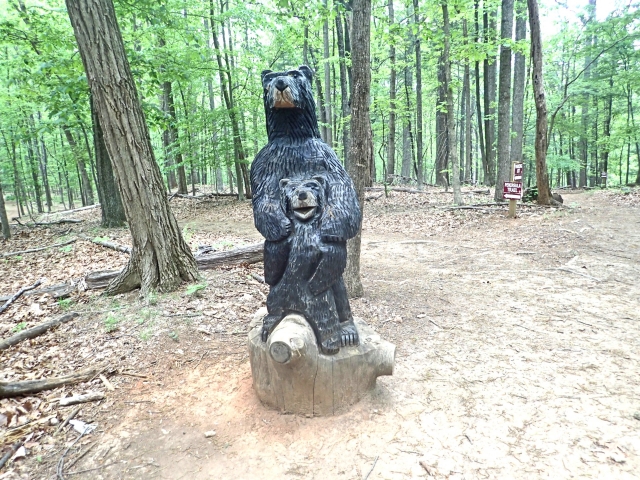



















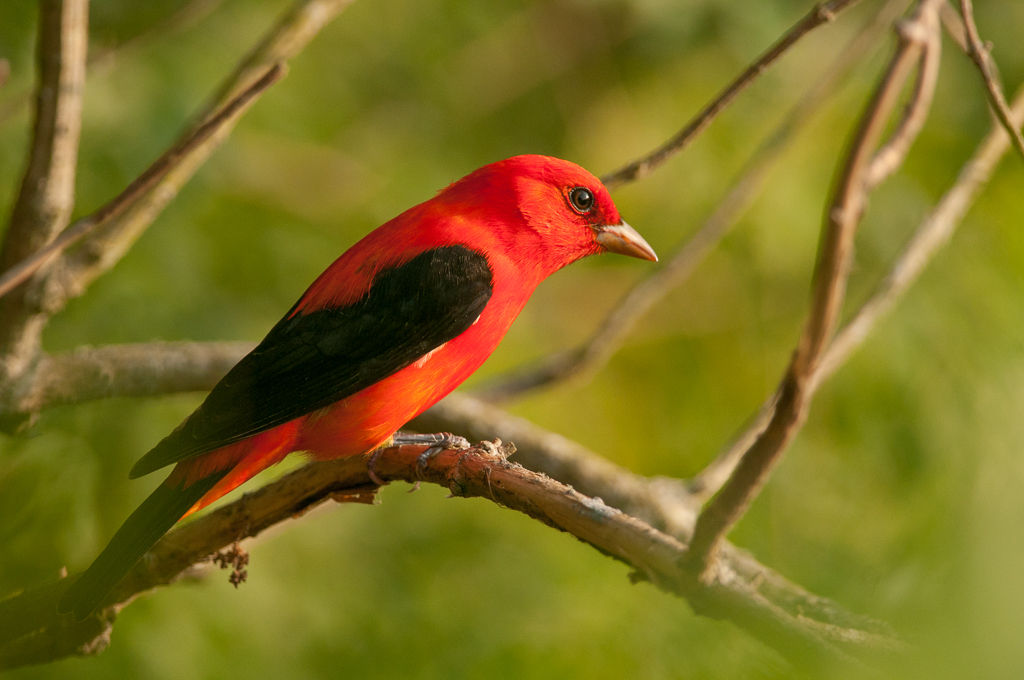

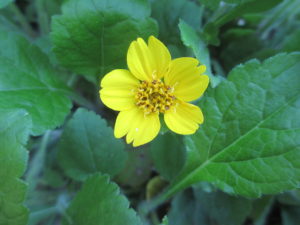
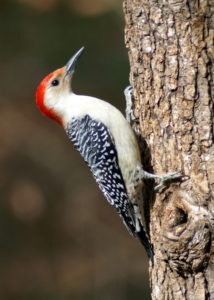
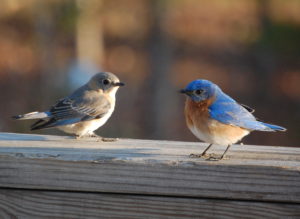
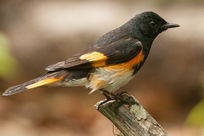 Learn about the plants and animals that live in the park
Learn about the plants and animals that live in the park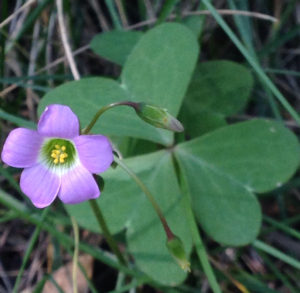
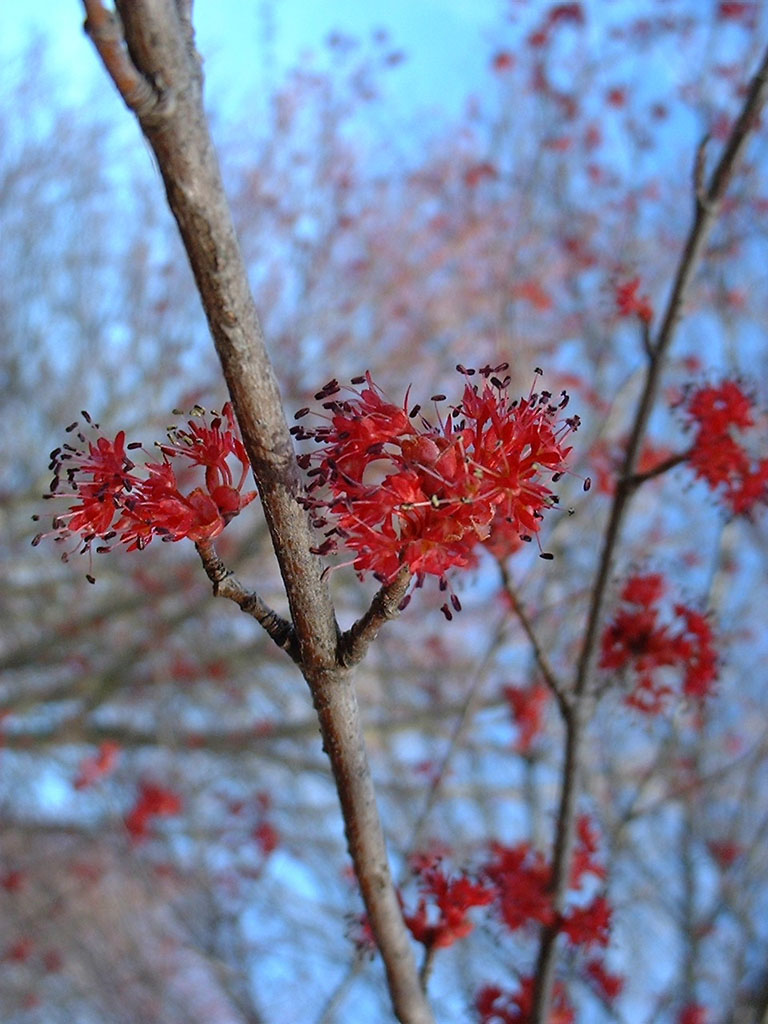














































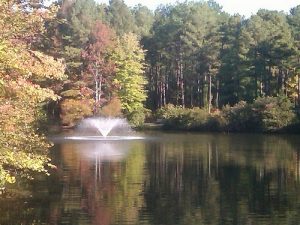 Deep Run Park includes two ponds, soccer & football fields, several play areas, picnic shelters, exercise & nature trails, a multiuse outdoor area and a recreation center. The park also offers five miles of biking, hiking and exercise trails, as well as a Nature Center.
Deep Run Park includes two ponds, soccer & football fields, several play areas, picnic shelters, exercise & nature trails, a multiuse outdoor area and a recreation center. The park also offers five miles of biking, hiking and exercise trails, as well as a Nature Center.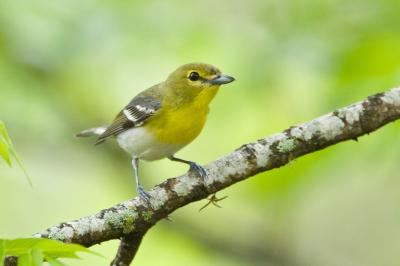
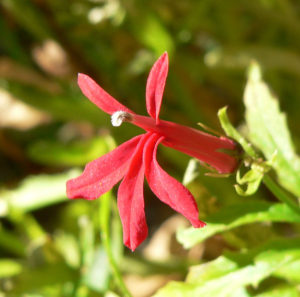
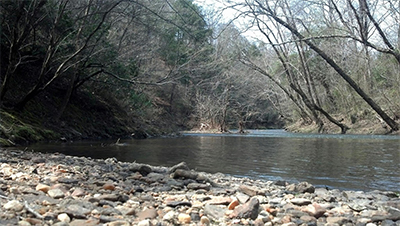


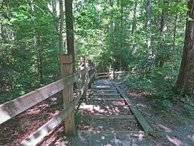 North Anna Gray Trail
North Anna Gray Trail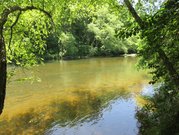 This 4-mile trail has steep slopes in several places, making for a more strenuous hike. However, the extra effort is worthwhile. Not only does this trail offer historical markers detailing the Civil War battle, but it also passes through diverse habitats, including forests, fields, stream banks, and river banks. Along the way, you are certain to encounter interesting plants and animals.
This 4-mile trail has steep slopes in several places, making for a more strenuous hike. However, the extra effort is worthwhile. Not only does this trail offer historical markers detailing the Civil War battle, but it also passes through diverse habitats, including forests, fields, stream banks, and river banks. Along the way, you are certain to encounter interesting plants and animals. Look for wildflowers in May on the Blue Trail
Look for wildflowers in May on the Blue Trail